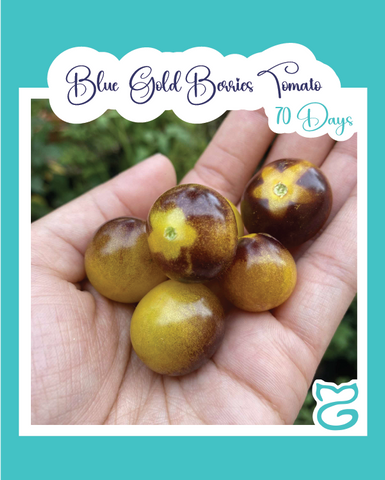
San Marzano Tomato
Indeterminate
Seed Count: Approx. 10 seeds
Days to Maturity: 80 Days
Description: The San Marzano is one of the most prized Italian paste tomatoes, prized not only by chefs, but home growers and home cooks alike. These crack resistant, dry fleshed, plump, plums are perfect for sauces, soups, preserving, fresh eating, and my favorite of all, salsas. San marzanos are long and cylidrical in shape, though I always end up with super plump ones. These heavy producers mature in cute clusters, and have almost no seed cavity that is easily scooped out. This means you get a super meaty tomato, perfect for premium pastes that doesn't require super long boiling times. They store well, for long periods of time, and make for a great canned tomato (though I never have any left to preserve, because I eat them all too quickly).
Mint2Grow Tip: I had these tomatoes growing in full sun here in South Florida, and they're pretty heat resistant. They're still producing and it's the middle of June (usually my tomatoes start to die off around the beginning of April, since my tomato season is usually from September-March). The only bug I ever have an issue with on this plant is mealy, which can be easily controlled with an organic horticultural spray, though I never bother, I just cut the infected areas off. The birds will also give you competition for delicious treats. However, even in my high heat environment, with my bugs and ravenous birds, I still get plenty San Marzanos left to eat, and their flavor seriously can't be beat. These forever have a spot in my humble garden.
How To Grow
Sowing: Start tomatoes indoors 6-8 weeks before the last frost of spring, or direct sow in warmer climates. Sow seeds 1/4" deep and 1" apart. Tomatoes need 70-75 degrees F to germinate, as well as adequate light. Keep the soil moist, but make sure there is proper drainage, or the seeds can rot. When the second set of leaves emerge, transplant the seedlings into individual pots. Bury the stems up to the lowest set of leaves for strongly rooted plants.
Growing: Provide a trellis for this indeterminate tomato, providing extra supports where fruit set. Protect plants, if temperature drops below 55 degrees F, or damage will occur. Keep soil consistently moist, or cracking may also occur. Mulching can be beneficial to preserve moisture, and deter weeds. It is important to avoid wetting the leaves to reduce diseases. You can prune suckers to increase production, (I usually don't bother, due to laziness, but I'll give my plants big trims every month or two once the tomatoes are removed from that section). I surround my tomato plants with basil (it's a great Tomato horn worm deterrent) Other companions include, carrots, garlic, or onions. However, avoid planting them with cabbage, or corn.
Harvesting: Test the ripeness of tomatoes by pressing them gently; the flesh should yield slightly. The mature color also indicates ripeness. If the stem does not come easily off the vine, cut it with a scissors to avoid damaging the vines. Vine ripened tomatoes have the best flavor, but you can harvest them before they fully ripe if pests or weather become an issue. As soon as frost comes, all tomatoes should be harvested, even the green ones. Unripe tomatoes will ripen eventually, if kept in a warm place out of direct sunlight. Seed saving: Since cross pollination between most tomato varieties is unlikely, isolation is not a concern. Pick fully ripe tomatoes and separate the seeds from the pulp, and let completely dry. You can also ferment your seeds to remove the gel like substance on the seeds exterior. During fermentation, any bad seeds will float to the top, and all of the viable seeds stay sunk to the bottom. Fermenting your seeds can also increase germination rates as well. To ferment, squeeze the seeds, along with its gel, into a jar. Add some water, and let it sit at room temperature for a couple of days, you should see a film form on the top, and it should smell a bit sour. Once the film forms, skim it off the top, and rinse out your seeds. Place them on parchment paper to dry. Once dry, store your seeds for the next season.




